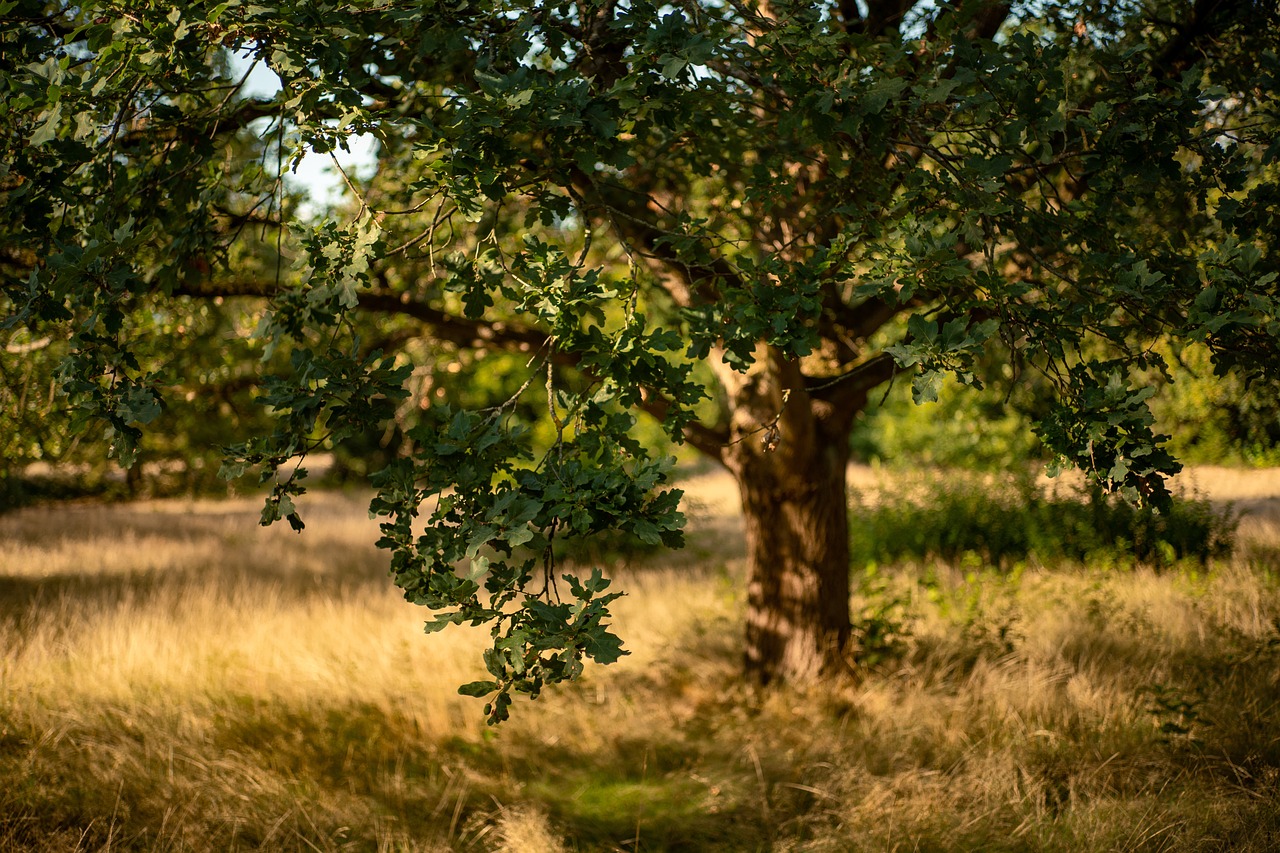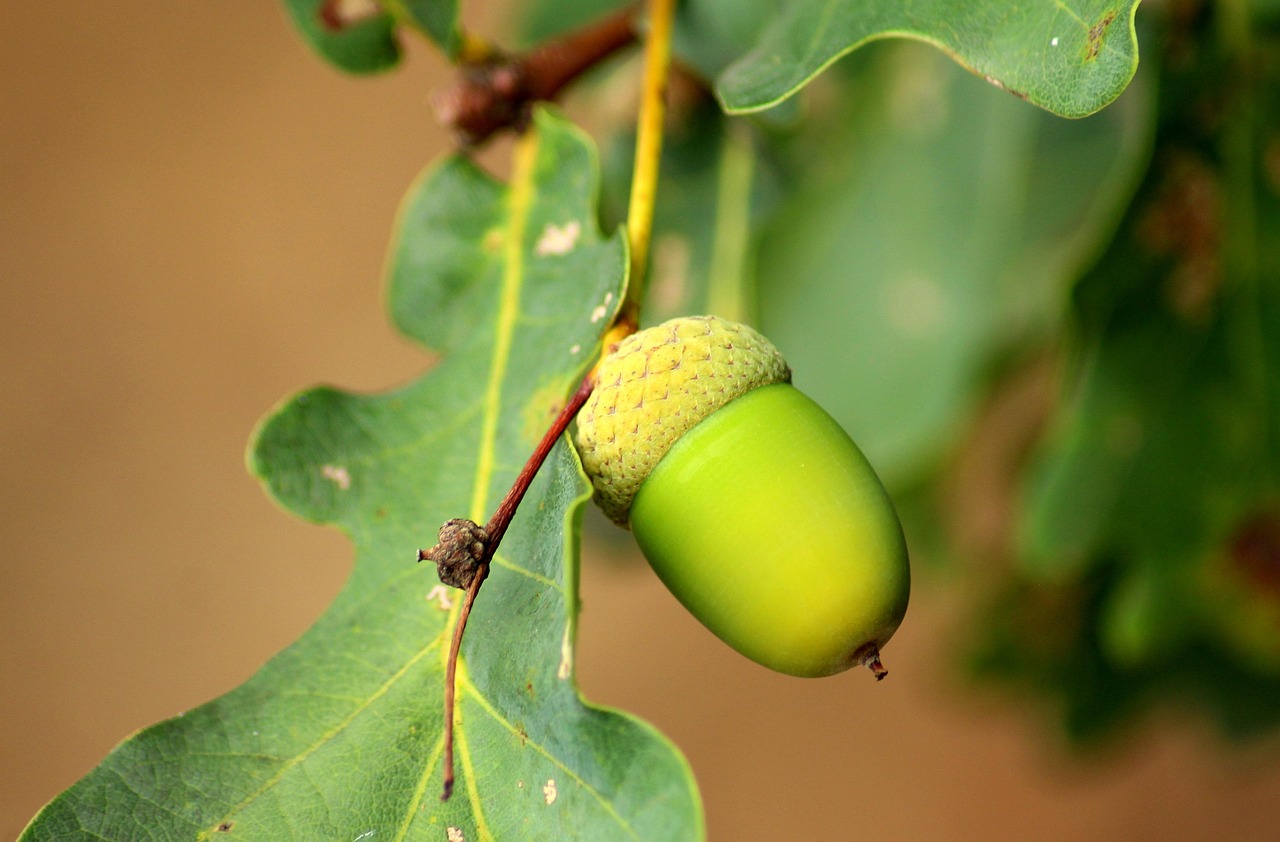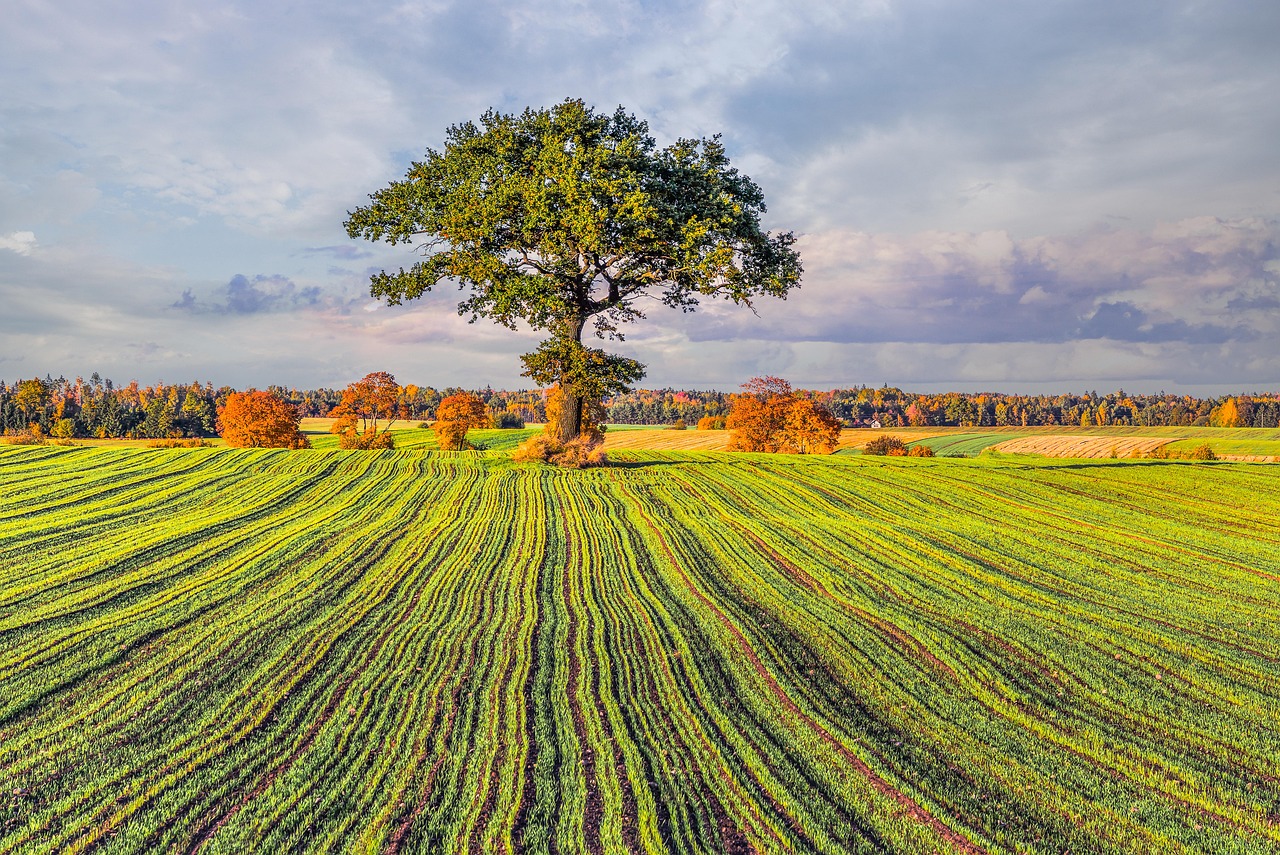The Valley Oak tree (Quercus lobata) exhibits a moderate growth rate, averaging 12 to 24 inches per year under optimal conditions. This growth rate is crucial for large woodland restoration projects, as it influences the timeline for establishing a healthy forest ecosystem.
Understanding Valley Oak Trees
The Valley Oak is a majestic tree native to California. It is well-known for its large size, wide-spreading canopy, and distinctive acorns. This species plays a significant role in California’s ecology and has a deep cultural significance for many Native American tribes in the region. The Valley Oak can grow to heights of 60 to 100 feet and can have a trunk diameter of up to 6 feet.

These trees thrive in various soil types and prefer deep, well-drained soils. They are typically found in valley floors, grasslands, and along riverbanks. Due to their adaptability, Valley Oaks are often chosen for restoration projects aimed at revitalizing degraded landscapes.
Growth Characteristics
The growth rate of Valley Oak trees is influenced by several factors, including soil quality, water availability, sunlight exposure, and competition from other vegetation. Understanding these factors is essential for successful woodland restoration.
Here are some key characteristics of Valley Oak growth:

- Soil Requirements: Valley Oaks prefer sandy loam or clay loam soils that are rich in organic matter.
- Water Needs: These trees are drought-tolerant once established but require sufficient water during their early growth stages.
- Sunlight: Full sun is ideal for optimal growth; however, they can tolerate partial shade.
- Competition: Young Valley Oaks may struggle against invasive species or dense understory vegetation.
Growth Rate and Its Implications
The growth rate of Valley Oaks can vary significantly based on environmental conditions. In optimal conditions, these trees can achieve impressive height and girth within a relatively short period. Understanding this growth rate is vital for planners and conservationists involved in woodland restoration projects.
The following table summarizes the average growth rates of Valley Oaks based on different conditions:
| Condition | Average Growth Rate (inches per year) |
|---|---|
| Optimal Conditions | 24 |
| Good Soil & Water | 18 |
| Poor Soil Conditions | 12 |
| Drought Conditions | 6 |
This table highlights that while Valley Oaks can grow rapidly under ideal circumstances, their growth may slow significantly in less favorable conditions. For restoration efforts, this means careful planning and management of site conditions are essential.

The Role of Valley Oaks in Ecosystems
Valley Oaks provide numerous ecological benefits. They support local wildlife by offering habitat and food sources. The acorns produced by these trees serve as a crucial food source for various animals, including birds and mammals. Their large canopies also provide shade, helping to regulate the temperature of the surrounding environment.
Moreover, Valley Oaks improve soil health through their extensive root systems. These roots help prevent soil erosion and promote water infiltration, which is vital for maintaining healthy ecosystems. Their presence can also enhance biodiversity by creating microhabitats for various species.
In large woodland restoration projects, incorporating Valley Oaks can accelerate the recovery of ecosystems. Their ability to grow relatively quickly allows them to establish dominance in the landscape, paving the way for other species to thrive.

Challenges in Restoration
While restoring woodlands with Valley Oaks presents many benefits, there are challenges to consider. Competition from invasive species can hinder their growth. Additionally, climate change may affect water availability and temperature extremes, further complicating restoration efforts.
It is essential to monitor environmental changes and adapt management practices accordingly. Restoration projects should include strategies for mitigating competition and ensuring that Valley Oaks receive the necessary resources during their critical early growth phases.
Strategies for Successful Valley Oak Restoration
Successful restoration of Valley Oaks in woodland ecosystems requires a comprehensive approach. This involves understanding the specific needs of the trees and addressing environmental challenges. By implementing effective strategies, restoration projects can thrive and contribute to long-term ecological stability.
Site Selection and Preparation
The first step in a successful restoration project is selecting the right site. Valley Oaks thrive in certain conditions, so it is essential to assess potential locations before planting. Key factors to consider include soil quality, moisture levels, and existing vegetation.
- Soil Testing: Conduct soil tests to determine nutrient levels and pH. Valley Oaks prefer a pH range of 6.0 to 7.5.
- Moisture Assessment: Evaluate the water table and drainage capabilities of the site.
- Vegetation Survey: Identify existing plant species, particularly invasive ones that may compete with young Oak trees.
Once a suitable site is identified, preparation is crucial. This may involve clearing invasive species and amending the soil to improve fertility. Proper site preparation sets the foundation for the successful growth of Valley Oaks.
Planting Techniques
When it comes to planting Valley Oaks, following proper techniques ensures better survival rates. It is recommended to plant during the fall or early spring when temperatures are cooler and moisture levels are higher.
- Spacing: Ensure adequate spacing between trees to allow for growth and prevent overcrowding. A general guideline is to plant them 30 to 40 feet apart.
- Planting Depth: Dig holes that are two to three times wider than the root ball and as deep as the root ball itself. This encourages healthy root development.
- Watering: Water the newly planted trees immediately after planting and maintain a regular watering schedule during the first year.
Maintenance Practices
After planting, ongoing maintenance is vital for the successful establishment of Valley Oaks. This includes monitoring growth, controlling competing vegetation, and providing necessary resources.
- Irrigation: In dry years, supplemental watering may be necessary. Aim for deep watering to encourage deep root growth.
- Weed Control: Regularly remove invasive plants around the base of the trees. This can be done using mulching techniques or manual removal.
- Pest Management: Monitor for pests and diseases that may threaten young trees. Implement organic pest control methods when necessary.
Community Involvement and Education
Engaging the community is essential for the success of woodland restoration projects. Local residents can play a significant role in fostering an environment that supports Valley Oak growth.
- Workshops: Organize workshops to educate community members about the importance of Valley Oaks and how they can help with restoration efforts.
- Volunteer Days: Host volunteer events for planting, maintenance, and monitoring activities. This builds community spirit while actively contributing to restoration.
- Partnerships: Collaborate with local organizations, schools, and environmental groups to create a network of support for restoration initiatives.
Monitoring and Evaluation
Monitoring the progress of Valley Oak restoration is critical for understanding its success and making informed adjustments. Regular evaluations help identify issues early on and enhance overall outcomes.
Key metrics to monitor include:
- Survival Rates: Track how many of the planted trees survive over time.
- Growth Measurements: Measure height and trunk diameter at regular intervals to assess growth rates.
- Biodiversity Indicators: Observe changes in local wildlife populations and plant diversity in relation to the growing Valley Oaks.
This ongoing monitoring helps inform future restoration efforts by highlighting what practices are most effective in promoting the health of Valley Oaks within woodland ecosystems.
The Importance of Genetic Diversity
Incorporating genetic diversity in planting efforts can significantly enhance the resilience of Valley Oak populations. Genetic variation allows trees to adapt better to changing environmental conditions and resist diseases.
To promote genetic diversity, consider sourcing acorns from multiple locations within the native range of Valley Oaks. This practice helps ensure a broader genetic base, which is crucial for long-term success.
By focusing on strategies that emphasize site selection, planting techniques, maintenance, community involvement, monitoring, and genetic diversity, restoration projects can effectively contribute to the recovery of Valley Oak populations and their associated ecosystems. This holistic approach not only supports individual tree growth but also fosters a healthier woodland habitat overall.
Ecological Benefits of Valley Oak Restoration
The restoration of Valley Oak trees goes beyond merely planting trees. It provides numerous ecological benefits that contribute to the overall health of the environment. Understanding these advantages is essential for promoting the importance of Valley Oaks in large woodland restoration projects.
Habitat for Wildlife
Valley Oaks create a vibrant ecosystem by providing habitat for various wildlife species. Their expansive canopies and acorns support numerous organisms, making them a keystone species in their native habitats.
- Birds: Numerous bird species rely on Valley Oaks for nesting and foraging. The acorns serve as a food source for birds like jays, woodpeckers, and sparrows.
- Mammals: Small mammals, such as squirrels and rabbits, benefit from the shelter and food provided by these trees. Larger mammals, including deer, also utilize the habitat created by Valley Oaks.
- Insects: The diverse foliage attracts various insects, which play a vital role in pollination and serve as a food source for birds and other animals.
Soil Health Improvement
Valley Oaks contribute positively to soil health through their extensive root systems. These roots help to aerate the soil, improving water infiltration and reducing erosion.
Key benefits of Valley Oaks on soil health include:
- Nutrient Cycling: As leaves and organic matter decay, they return nutrients to the soil, enhancing its fertility.
- Erosion Control: The deep roots anchor the soil, preventing erosion during heavy rains.
- Soil Structure: Healthy root systems improve soil structure, promoting better water retention and drainage.
Carbon Sequestration
Valley Oaks play an essential role in mitigating climate change by sequestering carbon dioxide from the atmosphere. As these trees grow, they absorb CO2 during photosynthesis, storing carbon in their biomass.
This process helps to:
- Reduce Greenhouse Gases: Increasing the number of Valley Oaks contributes to lower levels of greenhouse gases in the atmosphere.
- Enhance Biodiversity: Healthy ecosystems with diverse plant life, including Valley Oaks, are more resilient to climate changes and can better sequester carbon over time.
Water Regulation
The presence of Valley Oaks significantly influences local hydrology. Their large canopies help to regulate water cycles within the ecosystem.
Benefits include:
- Shade Creation: The shade provided by the oaks helps to cool local temperatures, reducing evaporation rates from soil and nearby water sources.
- Groundwater Recharge: The trees facilitate groundwater recharge by slowing down rainfall runoff and allowing more water to infiltrate into the soil.
- Stream Protection: Valley Oaks along riparian zones help stabilize banks and maintain water quality in nearby streams and rivers.
Cultural and Educational Importance
The restoration of Valley Oaks also holds significant cultural value. For many Indigenous communities in California, these trees have historical importance and are intertwined with cultural practices and traditions.
Cultural Significance
Valley Oak trees have been part of the landscape for thousands of years and play a role in the cultural heritage of Native American tribes. They provide resources such as acorns for food, wood for crafting tools, and materials for shelter.
- Traditional Uses: Acorns were a staple food source, and various methods were employed for processing them into meals.
- Cultural Ceremonies: Valley Oaks often feature in traditional stories, songs, and ceremonies that reinforce community identity.
Educational Opportunities
Restoration projects offer valuable educational experiences for local communities and schools. Engaging in hands-on activities teaches participants about ecology, conservation, and the importance of native species.
Key educational activities might include:
- Workshops: Host events focused on tree planting, care techniques, and ecological awareness.
- Field Trips: Organize trips to restoration sites where participants can learn about the growth processes and benefits of Valley Oaks.
- Citizen Science: Involve community members in monitoring tree growth and wildlife interactions, fostering a sense of stewardship.
The restoration of Valley Oaks not only aids in ecological recovery but also enriches cultural heritage and provides educational opportunities for future generations. By recognizing their multifaceted value, communities can foster a deeper connection with their environment while ensuring the preservation of these vital trees.
Future Directions for Valley Oak Restoration
As we look toward the future of Valley Oak restoration, several strategies and considerations can enhance the effectiveness of ongoing and upcoming projects. These approaches aim to ensure that restoration efforts are sustainable and impactful in the long term.
Adaptive Management Practices
Implementing adaptive management practices is crucial for responding to changing environmental conditions. This involves regularly assessing restoration outcomes and adjusting strategies accordingly.
- Monitoring Ecosystem Health: Continuous monitoring of soil health, water availability, and tree growth can provide valuable data. This information helps in making informed decisions about management practices.
- Feedback Mechanisms: Establish feedback loops with community stakeholders to gather insights on what is working and what needs improvement. Engaging local communities can lead to innovative solutions based on firsthand experience.
- Research Collaboration: Partner with academic institutions and research organizations to incorporate scientific findings into restoration practices. This collaboration can identify best practices and enhance overall project success.
Integrating Technology
Utilizing technology can significantly enhance restoration efforts. Geographic Information Systems (GIS), drones, and remote sensing can assist in planning and monitoring projects.
- GIS Mapping: Use GIS tools to analyze spatial data, helping to identify suitable planting sites and monitor the growth of Valley Oaks over time.
- Drones: Employ drones for aerial surveys to assess tree health and gather data efficiently across large areas.
- Mobile Applications: Develop mobile apps for community members to report observations and track growth progress, fostering a sense of involvement.
Community-Led Initiatives
Empowering local communities to take an active role in restoration efforts can lead to more sustainable outcomes. When communities are directly involved, they are more likely to invest in the success of the project.
- Local Stewardship Programs: Establish programs that train residents to care for Valley Oaks and monitor their health. This builds long-term commitment and fosters a sense of ownership.
- Cultural Celebrations: Organize events that celebrate Valley Oaks and educate the public about their ecological importance. These celebrations can strengthen community bonds while promoting environmental awareness.
- Engagement with Youth: Involve schools in restoration activities by creating educational programs that focus on the importance of Valley Oaks and their role in the ecosystem.
Conclusion
The restoration of Valley Oak trees is a multifaceted endeavor that provides significant ecological, cultural, and educational benefits. These majestic trees are not only vital for maintaining biodiversity but also support local wildlife and contribute to soil health, carbon sequestration, and water regulation. By understanding their growth rates and requirements, communities can effectively plan and implement restoration projects that yield long-lasting positive effects.
Through careful site selection, planting techniques, ongoing maintenance, and community involvement, Valley Oak restoration initiatives can thrive. The integration of adaptive management practices and technology further enhances these efforts, enabling communities to respond proactively to environmental challenges.
Ultimately, the successful restoration of Valley Oaks fosters a deeper connection between people and their environment. It enriches local ecosystems while preserving cultural heritage for future generations. By prioritizing these trees in woodland restoration projects, we contribute to a healthier planet and a more sustainable future.
